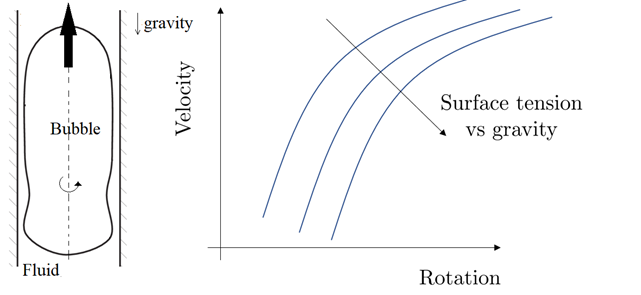
Capillary tubes are tubes of very small diameter widely used in scientific and clinical applications, e.g. blood collection and micro-hematocrit determination. It is not surprising that the dynamics in such tubes of small diameter has been largely investigated in the past. A typical example is the Boycott effect, an increase of sedimentation when the tube is inclined with respect to the vertical.
Long bubbles in tubes of very small diameter exhibit very interesting behaviors, such as the blockage of the rise of the bubble. This blockage depends on the gravity, surface tension and diameter of the tube. Besides, the rising speed of such bubbles can be predicted (Bretherton 1961).
Here, we investigate the effect of centrifugal forces when the tube is rotated around its axis.
The first part of the project aims at analytically derive, following Bretherton (1961), the blockage conditions and the rising speed of the bubble, depending on the rotation speed and the flow and geometrical parameters.
The second part consists of the realization of a mechanical system that can measure the speed of the bubble for different angular velocities and reproduce the theoretical curves relating the rising speed of the bubble and the rotational speed.
Supervisor: Pier Giuseppe Ledda
REFERENCES
Bretherton, F. (1961). The motion of long bubbles in tubes. Journal of Fluid Mechanics, 10(2), 166-188. doi:10.1017/S0022112061000160